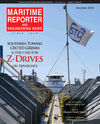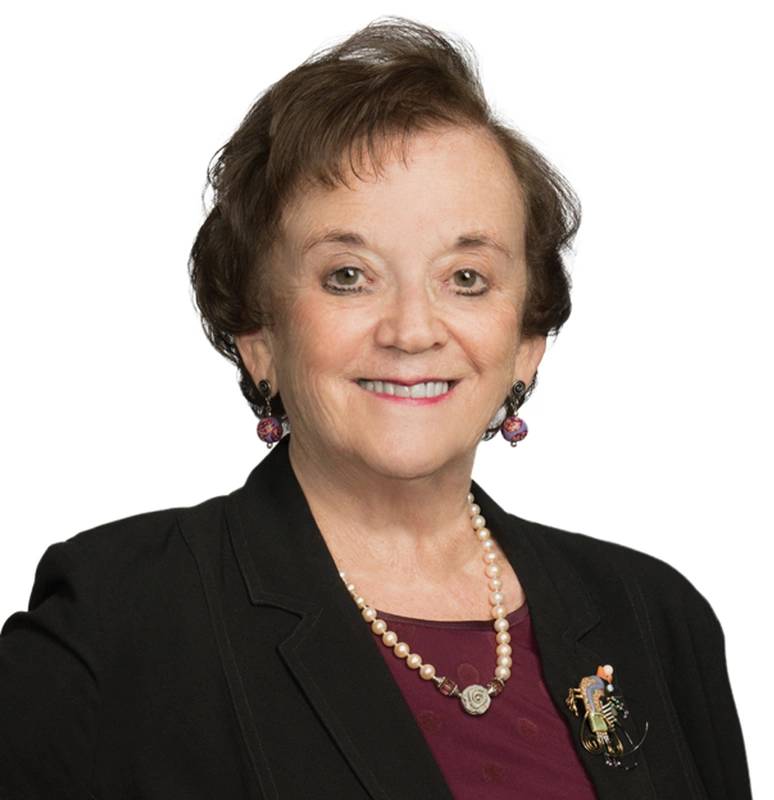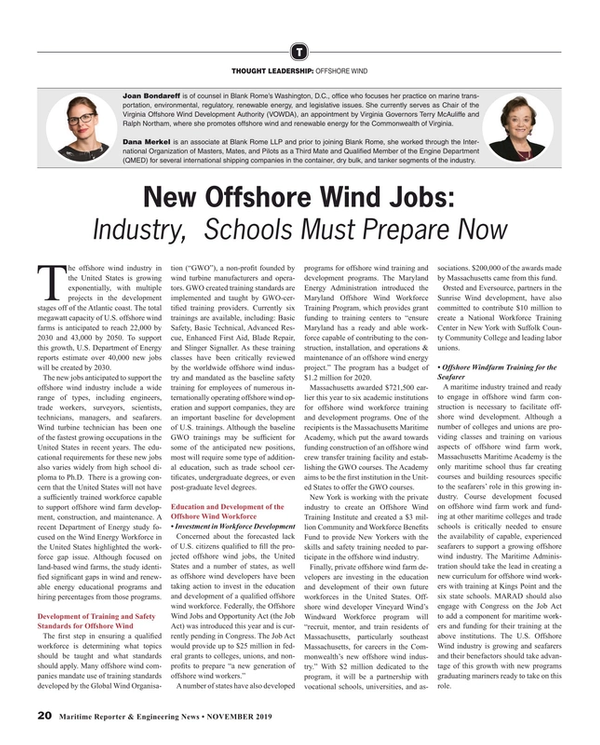
Maritime Schools Must Prep for Offshore Wind Jobs
The offshore wind industry in the United States is growing exponentially, with multiple projects in the development stages off of the Atlantic coast. The total megawatt capacity of U.S. offshore wind farms is anticipated to reach 22,000 by 2030 and 43,000 by 2050. To support this growth, U.S. Department of Energy reports estimate over 40,000 new jobs will be created by 2030.
The new jobs anticipated to support the offshore wind industry include a wide range of types, including engineers, trade workers, surveyors, scientists, technicians, managers, and seafarers. Wind turbine technician has been one of the fastest growing occupations in the United States in recent years. The educational requirements for these new jobs also varies widely from high school diploma to Ph.D.
There is a growing concern that the United States will not have a sufficiently trained workforce capable to support offshore wind farm development, construction, and maintenance. A recent Department of Energy study focused on the Wind Energy Workforce in the United States highlighted the workforce gap issue. Although focused on land-based wind farms, the study identified significant gaps in wind and renewable energy educational programs and hiring percentages from those programs.
Development of Training and Safety Standards for Offshore Wind
The first step in ensuring a qualified workforce is determining what topics should be taught and what standards should apply. Many offshore wind companies mandate use of training standards developed by the Global Wind Organisation (GWO), a non-profit founded by wind turbine manufacturers and operators. GWO created training standards are implemented and taught by GWO-certified training providers. Currently six trainings are available, including: Basic Safety, Basic Technical, Advanced Rescue, Enhanced First Aid, Blade Repair, and Slinger Signaller. As these training classes have been critically reviewed by the worldwide offshore wind industry and mandated as the baseline safety training for employees of numerous internationally operating offshore wind operation and support companies, they are an important baseline for development of U.S. trainings.
Although the baseline GWO trainings may be sufficient for some of the anticipated new positions, most will require some type of additional education, such as trade school certificates, undergraduate degrees, or even post-graduate level degrees.
Education and Development of the Offshore Wind Workforce Investment in Workforce Development
Concerned about the forecasted lack of U.S. citizens qualified to fill the projected offshore wind jobs, the United States and a number of states, as well as offshore wind developers have been taking action to invest in the education and development of a qualified offshore wind workforce. Federally, the Offshore Wind Jobs and Opportunity Act (the Job Act) was introduced this year and is currently pending in Congress. The Job Act would provide up to $25 million in federal grants to colleges, unions, and non-profits to prepare “a new generation of offshore wind workers.”
A number of states have also developed programs for offshore wind training and development programs. The Maryland Energy Administration introduced the Maryland Offshore Wind Workforce Training Program, which provides grant funding to training centers to “ensure Maryland has a ready and able workforce capable of contributing to the construction, installation, and operations & maintenance of an offshore wind energy project.” The program has a budget of $1.2 million for 2020.
Massachusetts awarded $721,500 earlier this year to six academic institutions for offshore wind workforce training and development programs. One of the recipients is the Massachusetts Maritime Academy, which put the award towards funding construction of an offshore wind crew transfer training facility and establishing the GWO courses. The Academy aims to be the first institution in the United States to offer the GWO courses.
New York is working with the private industry to create an Offshore Wind Training Institute and created a $3 million Community and Workforce Benefits Fund to provide New Yorkers with the skills and safety training needed to participate in the offshore wind industry.
Finally, private offshore wind farm developers are investing in the education and development of their own future workforces in the United States. Offshore wind developer Vineyard Wind’s Windward Workforce program will “recruit, mentor, and train residents of Massachusetts, particularly southeast Massachusetts, for careers in the Commonwealth’s new offshore wind industry.” With $2 million dedicated to the program, it will be a partnership with vocational schools, universities, and associations. $200,000 of the awards made by Massachusetts came from this fund.
Ørsted and Eversource, partners in the Sunrise Wind development, have also committed to contribute $10 million to create a National Workforce Training Center in New York with Suffolk County Community College and leading labor unions.
Offshore Windfarm Training for the Seafarer
A maritime industry trained and ready to engage in offshore wind farm construction is necessary to facilitate offshore wind development. Although a number of colleges and unions are providing classes and training on various aspects of offshore wind farm work, Massachusetts Maritime Academy is the only maritime school thus far creating courses and building resources specific to the seafarers’ role in this growing industry. Course development focused on offshore wind farm work and funding at other maritime colleges and trade schools is critically needed to ensure the availability of capable, experienced seafarers to support a growing offshore wind industry.
The Maritime Administration should take the lead in creating a new curriculum for offshore wind workers with training at Kings Point and the six state schools. MARAD should also engage with Congress on the Job Act to add a component for maritime workers and funding for their training at the above institutions. The U.S. Offshore Wind industry is growing and seafarers and their benefactors should take advantage of this growth with new programs graduating mariners ready to take on this role.
About the Authors
 Joan Bondareff
Joan Bondareff
Joan Bondareff is of counsel in Blank Rome’s Washington, D.C., office who focuses her practice on marine transportation, environmental, regulatory, renewable energy, and legislative issues. She currently serves as Chair of the Virginia Offshore Wind Development Authority (VOWDA), an appointment by Virginia Governors Terry McAuliffe and Ralph Northam, where she promotes offshore wind and renewable energy for the Commonwealth of Virginia.
 Dana Merkel
Dana Merkel
Dana Merkel is an associate at Blank Rome LLP and prior to joining Blank Rome, she worked through the International Organization of Masters, Mates, and Pilots as a Third Mate and Qualified Member of the Engine Department ("QMED") for several international shipping companies in the container, dry bulk, and tanker segments of the industry.
Read Maritime Schools Must Prep for Offshore Wind Jobs in Pdf, Flash or Html5 edition of November 2019 Maritime Reporter
Other stories from November 2019 issue
Content
- Training Tips for Ships: Taking the Stress out of Tests page: 10
- Training Tips for Ships: Taking the Stress out of Tests page: 10
- Risk & Reward of The Internet of (Maritime) Things page: 12
- Five Common Mistakes in Maritime Contracts page: 14
- Taming Ferry Wakes and Reducing CO2 page: 16
- Prepare Now for 40,000 Offshore Wind Jobs page: 20
- Maritime Schools Must Prep for Offshore Wind Jobs page: 20
- Offshore Wind: Decisions Needed Sooner, not Later page: 22
- Offshore: OSV Market Report page: 28
- Interview: Ed Grimm, CEO, Southern Towing Company page: 34
- USCG PSC Equals meaningful Polar Presence page: 44
- For Ship Recycling, Grieg (Goes) Green page: 52
- Interview: Boriana Farrar, Ship Owners Claims Bureau page: 66
- Scrubbers: A "360-degree solution" for Owners page: 72


